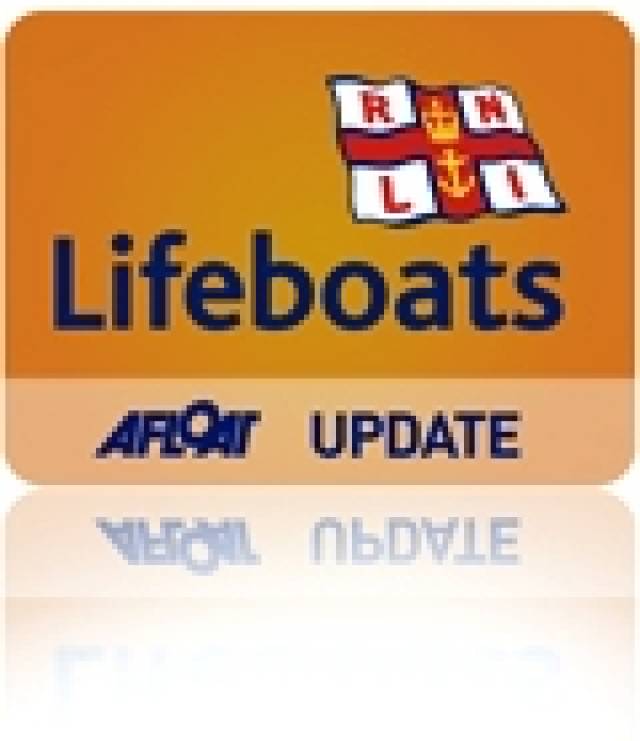#RNLI – Both lifeboats stationed at Dun Laoghaire were called into service three times on Saturday afternoon for a variety of incidents in which eleven people were assisted.
Following a 999 call, the Irish Coastguard's Marine Rescue Co-Ordination Centre (MRCC) in Dublin tasked the RNLI's Trent class all-weather lifeboat (ALB) at Dun Laoghaire to assist five people in difficulty with their 12-foot speedboat after engine problems. The lifeboat launched shortly after 3.30pm and found the casualty two miles south of Dalkey Island.
The five persons were taken on board the lifeboat and the speedboat was taken to Dun Laoghaire marina.
Later in the afternoon, MRCC Dublin tasked the RNLI after reports of kite-surfers in difficulty off Dun Laoghaire's West Pier. Due to the shallow-water area, the Inshore lifeboat (ILB) was used and found two people whose kite wires had become tangled and were unable to reach land. The pair and most of their equipment was recovered and taken to the ILB boathouse.
As the ILB entered Dun Laoghaire Harbour, the coastguard received a call for assistance on VHF radio from a party of kayakers that were crossing the Irish Sea to Holyhead. Having departed for the Welsh port with an ETA of 6am on Sunday, one of the group had sustained a shoulder injury and was unable to continue. MRCC Dublin tasked the ALB at Dun Laoghaire at 5.45pm which launched immediately after the ILB had landed the kitesurfers.
The party of kayakers had reached a position ten miles east of Dun Laoghaire and were located after 30 minutes using VHF direction finding equipment on the lifeboat. All four were taken on board the ALB and the large kayaks loaded onto the sidedecks. One of the volunteer lifeboat crew was a Doctor who examined the injured paddler. The group was landed at Dun Laoghaire marina at 8.15pm and no further medical attention was required.































































